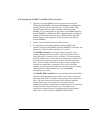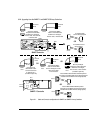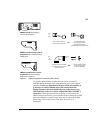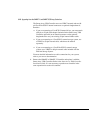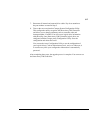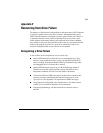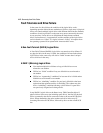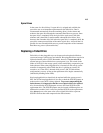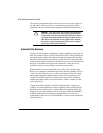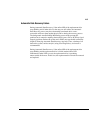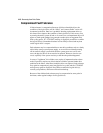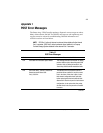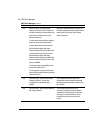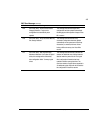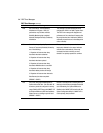
H-3
Compaq Smart Array 3200 Controller Reference Guide
Writer: Rickard Project: Compaq Smart Array 3200 Controller Reference Guide Comments: 340862-002
File Name: O-APPH.DOC Last Saved On: 12/7/98 1:47 PM
COMPAQ CONFIDENTIAL - NEED TO KNOW REQUIRED
Spare Drives
In the event of a drive failure, if a spare drive is assigned and available, the
spare drive acts as an immediate replacement for the failed drive. Data is
reconstructed automatically from the remaining drive(s) in the volume and
written to the spare drive through the Automatic Data Recovery process. Once
the spare drive is completely built, the logical drive again runs at full fault
tolerance and is then able to sustain another subsequent drive failure. Note,
however, that if another drive fails before the spare drive is completely built, the
spare drive cannot prevent failure of the entire logical drive. Also note that it is
possible for non-correctable disk errors to prevent completion of the Automatic
Data Recovery process (discussed below).
Replacing a Failed Drive
Failed drives in hot-pluggable trays can be removed and replaced while host
system and storage system power are both ON. Hot-pluggable drives can also be
replaced when the power is OFF. Remember, however, to never turn off an
external storage system while the host system power is on. This results in the
failure of all drives in the storage system, which would likely compromise your
fault tolerance. When a hot-pluggable drive is inserted, all disk activity on the
controller is temporarily paused while the drive is spinning up (usually 20
seconds or so). If the drive is inserted while power is ON, in fault-tolerant
configurations, recovery of data on the replacement drive begins automatically
(indicated by blinking online LED).
Non-hot-pluggable drives should only be replaced while the system power is
OFF. On all non-hot-pluggable drives, be sure to check the SCSI ID jumpers to
make sure the correct drive is being replaced. To prevent compromising the
fault tolerance, it is imperative that the correct physical drive be replaced.
Also, be sure that the SCSI ID jumpers are set to the same SCSI ID on the
replacement drive. The SCSI ID jumpers may be located at different places on
different drive models, but it is necessary that the SCSI ID on the replacement
drive always be set to the same value as the original failed drive to prevent
SCSI ID conflicts that could compromise the fault tolerance.



